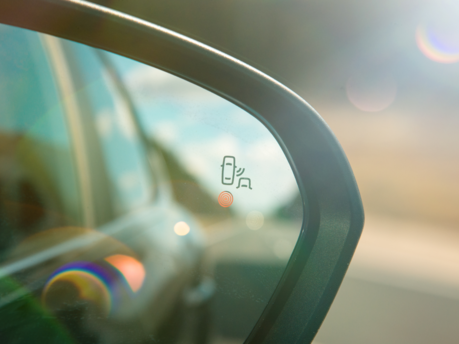We Talk Car Safety Tech
In-car safety technology and features explained
As the technology advances within our cars, the more we expect them to do for us; take the Alexa integration in the Nissan ARIYA for example! With these advancements come higher expectations in the safety stakes, with the technology available to make our journeys safer, and accidents less likely.
Whilst the Euro NCAP rating of each vehicle is a great place to start in understanding how the car you’re interested in measures up to industry standards, it’s also important to understand the features on board that support your safety. Whether it’s an everyday runaround or a family SUV, the safety tech available on modern vehicles are well worth exploring.
Here we explain some of the features to keep an eye out for…
Standard safety equipment
If you’ve been driving for a while, you’ll probably recognise some of the standard safety features that appear within modern vehicles. These include:
- Seat Belts - to secure you in your seat, minimising movement in the event of a collision.
- Airbags - a cushion deployed upon impact to prevent you from making contact with hard surfaces within the vehicle.
- ABS (Antilock Braking System) - to stop the wheels from ceasing to spin if you have to brake suddenly, allowing you to continue steering.
- Traction Control - to stop the wheels from spinning during acceleration.
Active safety systems and advanced driver assistance
This is where some of the more impressive developments can start to be seen; this tech works to step in on your behalf if it senses that a situation has become hazardous on the roads, either through acting for you or sending signals to the driver.
Here are some of the most impressive features:
Autonomous Emergency Braking (AEB)
Using radar and/or camera technology to monitor the road ahead, AEB can brake on behalf of the driver if they fail to react in time in the event of an impending collision. Whilst the standard safety features try to minimise the impact of a collision or incident on the road as it’s happening, Autonomous Emergency Braking can help avoid it completely, or at least slow down the speed of it if it’s unavoidable.
Thatcham Research suggests that AEB has the potential to save 1,100 lives and 122,860 casualties in the UK over the next decade, which is nothing short of amazing!
Intelligent Speed Assistance (ISA)
In some of the most sophisticated technology developed so far in the fight against speeding, Intelligent Speed Assistance takes charge of the vehicle’s adherence to the speed limit using digital map data and/or a front-facing camera.
It either alerts the driver if they begin to exceed the speed limit, or adjusts the speed automatically to ensure it’s within the legal remit, leaving you to concentrate on everything else that’s going on.
Intelligent Speed Assist is considered so important within modern vehicles that the EU made it compulsory for all new vehicles manufactured from July 2022 to have it onboard, a move expected to be followed up in the UK in the future too.
Lane Keep Assist
Much has been done within cars to keep you on the straight and narrow, which is where lane assistance technology comes in. It can take the form of an alert and vibration if the onboard camera detects that you’re drifting over white lane markers without indicating, or an automatic adjustment made by the car itself to correct your path.
This technology is designed for fast roads such as motorways, so it will only kick in when you’re travelling around 40MPH and over.
Blind Spot Monitoring
That tricky-to-see spot over our shoulders can make changing lanes a potentially dangerous manoeuvre, for us and for other road users. Whilst a check over your shoulder should always be part of the process, the blind spot monitoring system uses sensors to keep tabs on what’s coming up at the side of you and letting you know via a light if it detects something that you may not be able to see in your mirrors.
Adaptive Cruise Control
Upgrading the convenience of a set speed on long journeys that your typical cruise control allows, adaptive cruise control uses radar sensors to respond to traffic conditions, adjusting your speed to maintain a predetermined distance from the car ahead.
Get the lowdown on safety ratings
The presence of safety features like those we’ve mentioned above are taken into consideration by Euro NCAP (New Car Assessment Programme), and is used to rate each car between 1 and 5. Each car that arrives on the market is given a Euro NCAP rating, and their website is a great place to start when you want to understand the level of protection a car can offer you and your family.
Find your next car at EMG in East Anglia
Whatever features you’re looking for in your next car, the EMG can help you find the perfect set of wheels for you. Get started by browsing our new Kias, Nissans, Mazdas and MGs, or discovering our wide range of used vehicles located at our dealerships across East Anglia.

